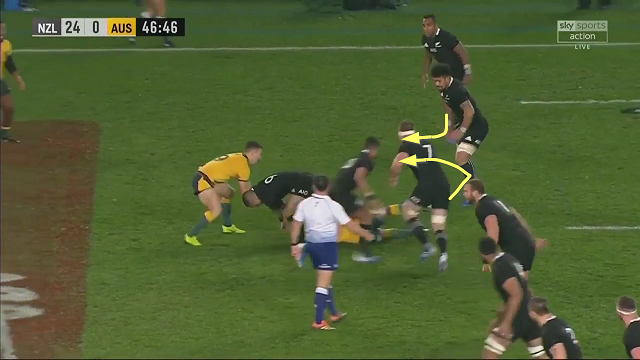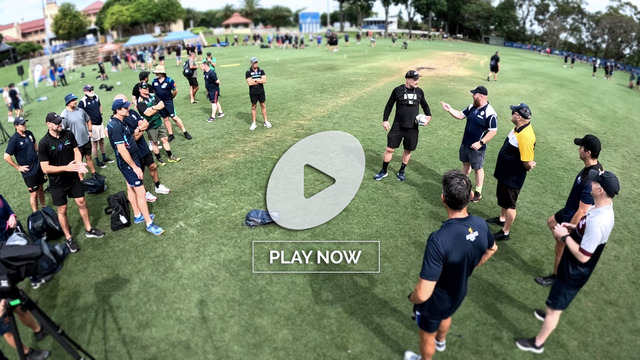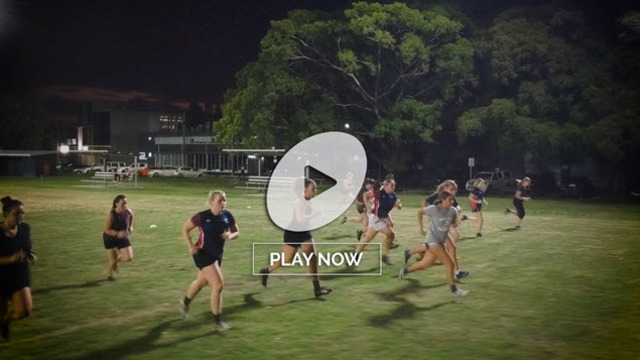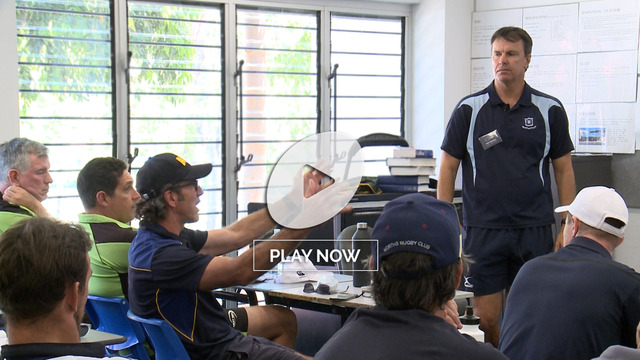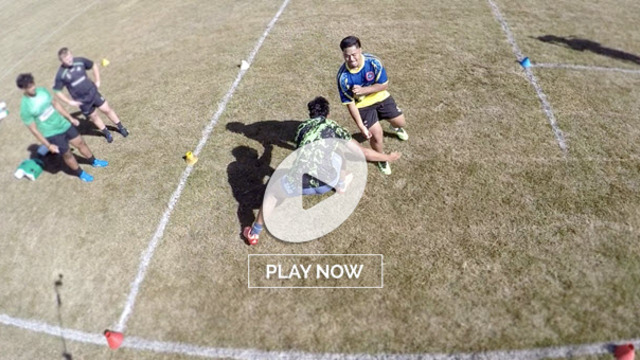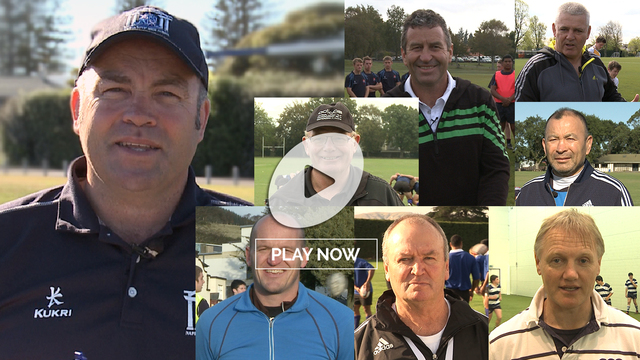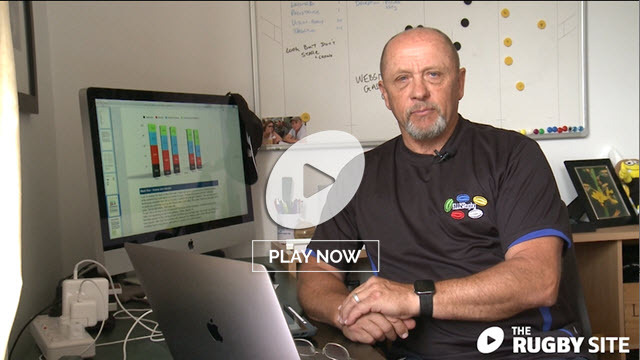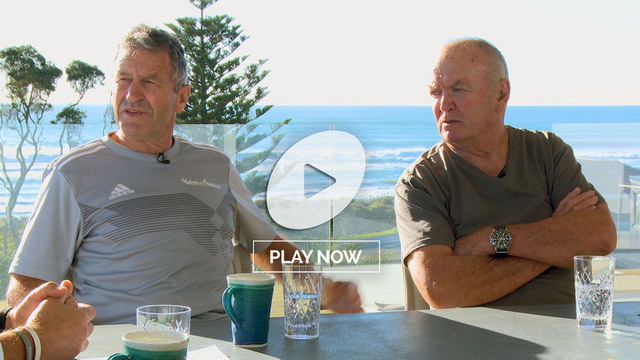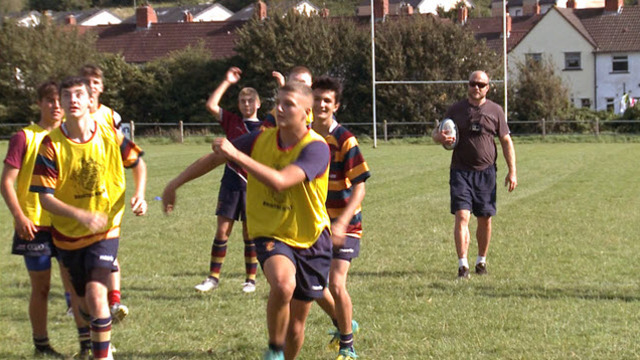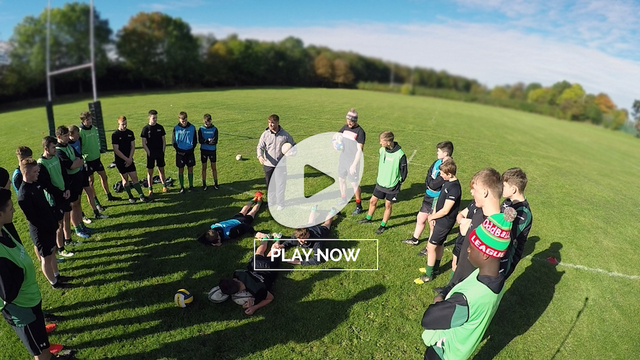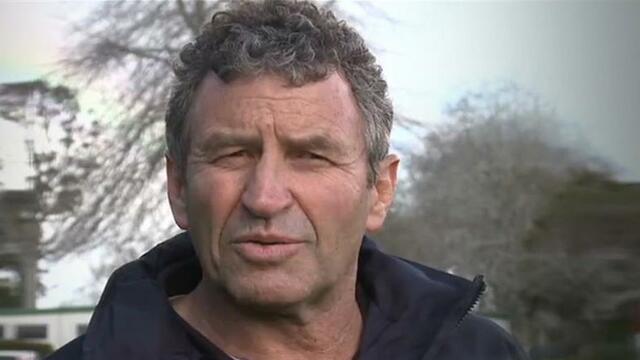How the All Blacks made the ‘twins’ click at Eden Park
Australia did it to reach the final of the 2015 World Cup. Wales have done it on their 14-match unbeaten run to the number one ranking in the world, the British & Irish Lions did it to draw a series in New Zealand in 2017; Scotland embraced it under the stewardship of Vern Cotter and it coincided with an upswing in their rugby fortunes. Now, England are trying it out for size in their World Cup warm-up matches.
What is this ‘it’, the magic ingredient on a professional rugby field? It is the selection of two open-side flankers in the same starting XV. Whether it is Australia picking both Michael Hooper and David Pocock at the last World Cup, or Warren Gatland’s selection of Sean O’Brien and Sam Warburton for the 2017 Lions, or his Grand Slam clean sweep of five consecutive wins with Justin Tipuric and Josh Navidi yoked together in the back-row in the 2019 Six Nations, the formula has been successful.
Likewise, Scotland have achieved most of their most significant recent victories – the 25-13 win over England at Murrayfield in the 2018 Six Nations, and the 53-24 trouncing of the Wallabies at the end of 2017 – with two natural sevens, Hamish Watson and John Barclay, both featured in their starting unit.
New Zealand finally accepted the inevitable with the selection of both Sam Cane and Ardie Savea, two outstanding open-side flankers, in the same side for The Rugby Championship matches against Australia and Argentina, and in the second Bledisloe Cup versus the Wallabies last weekend.
The match at Eden Park was the game in which the combination of the ‘twins’ (along with All Blacks captain Kieran Read) finally clicked. On defence, the All Blacks turned over 10 Wallaby rucks in 82 at a massive 12% turnover rate, and much of that was due to the omnipresent influence of Sam Cane and Ardie Savea in and around the contact point.
On attack, the combination provided the possibility for more instant width to both sides of the field. The selection fits well with the traditional New Zealand pattern of forcing turnovers in contact – or attracting negative kicks to avoid that pressure on the deck – then utilising the full width of the field to exploit a change of possession, when teams tend to be at their most vulnerable.
Let’s take a look at how the combination worked out with the ball in All Black hands. The standard ‘look’ with the ball in between the two 15m lines, but also a definite open-side and short-side, appears here:
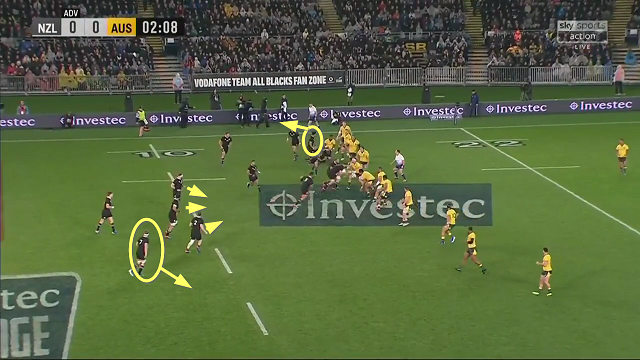
It is a 1-3-3-1 set-up with the two open-side flankers as the loose “1’s”. With the ball inside the left 15m line, Sam Cane drifts outside the second pod of forwards (arrowed) to provide a link to the backs on the open side of the field. At the top of the screen, Ardie Savea (circled) drops towards the short-side touch-line at the completion of the ruck.
This was a role in which Savea made a number of important contributions to the Kiwi attack in the first half:
In the first example, Savea is the widest attacker beyond the two All Black centres; in the second, he is playing just inside left winger George Bridge. In both cases, he has the skill-set and power to make something happen in the short-side tram-lines.
With only one side of the field to play in, the attack looked like this:
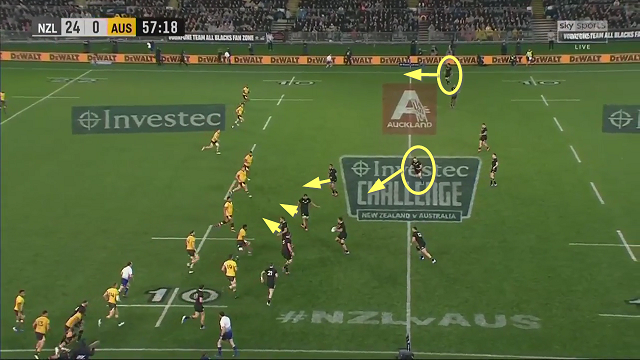
Here Cane is linking the first pod of forwards to the line outside him, while Savea fulfils the role of the widest attacker out on the right side-line.
It was on defence however, where Cane and Savea had their most concrete impact.
The presence of two open-sides gives the D a natural opportunity to connect both at the point of contact, with one (typically Sam Cane) tackling and the other jackalling over the top of the ball-carrier (Savea):
Ardie Savea is a hair’s breadth away from winning turnover, and it requires a quick reaction by Australian number 9 Nic White to prevent it.
At the game in Eden Park, Cane and Savea were even more effective in the counter-ruck on an exposed tackle site:
With the first Australian (number 7 Michael Hooper) running straight across the tackle to engage Savea, there is no second cleanout player left to scan for threats above the ball. The All Blacks scrum-half Aaron Smith takes on Nic White, and both Savea and Cane instantly recognize the opportunity to drive over the ball rather than staying out in their ‘guard’ positions for the next phase.
Both are careful to use a ‘J-line’ and shuffle sideways before moving forward, in order to avoid being penalized for an entry outside ‘the gate’:
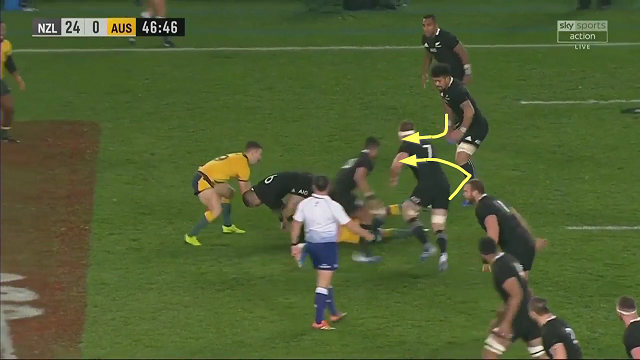
Cane attacks the ball on the ground, and Ardie gets a touch to shovel the ball out to Sevu Reece on the right-hand side.
The dose was repeated at a ruck where New Zealand captain Kieran Read had successfully got in underneath the Wallaby trying to clean him out (Lukhan Salakaia-Loto):
Both Cane and Savea make excellent decisions as a pair, abandoning their roles at guard on the next phase in order to drive across the tackle ball at source. That is what ‘staying in the present moment’ really means:
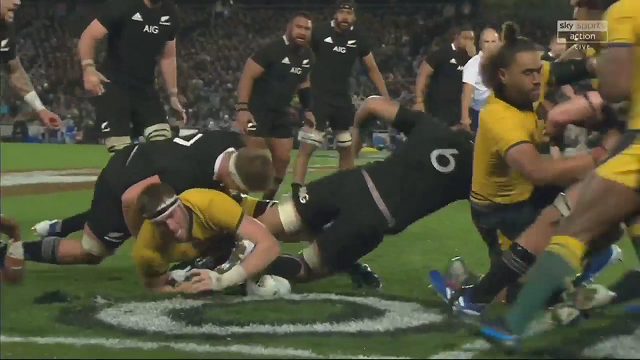
The coup de grace occurred ironically after Cane had left the field, to be replaced by a third open-side flanker in the shape of Matt Todd. It illustrated the value of the ‘twins’ in a turnover situation when the ball changes hands:
Ardie Savea wins the ball unchallenged at the breakdown, but there is still another player with a number 7’s typical linking skills (Todd) standing at second receiver, ready to pass the ball out towards the two backs outside him. Naturally Matt Todd is still the closest man when George Bridge touches down for the try, ever-ready should he be needed in support or at a subsequent ruck. The bonus of two 7’s in transition play is undoubted, there for all to see.
